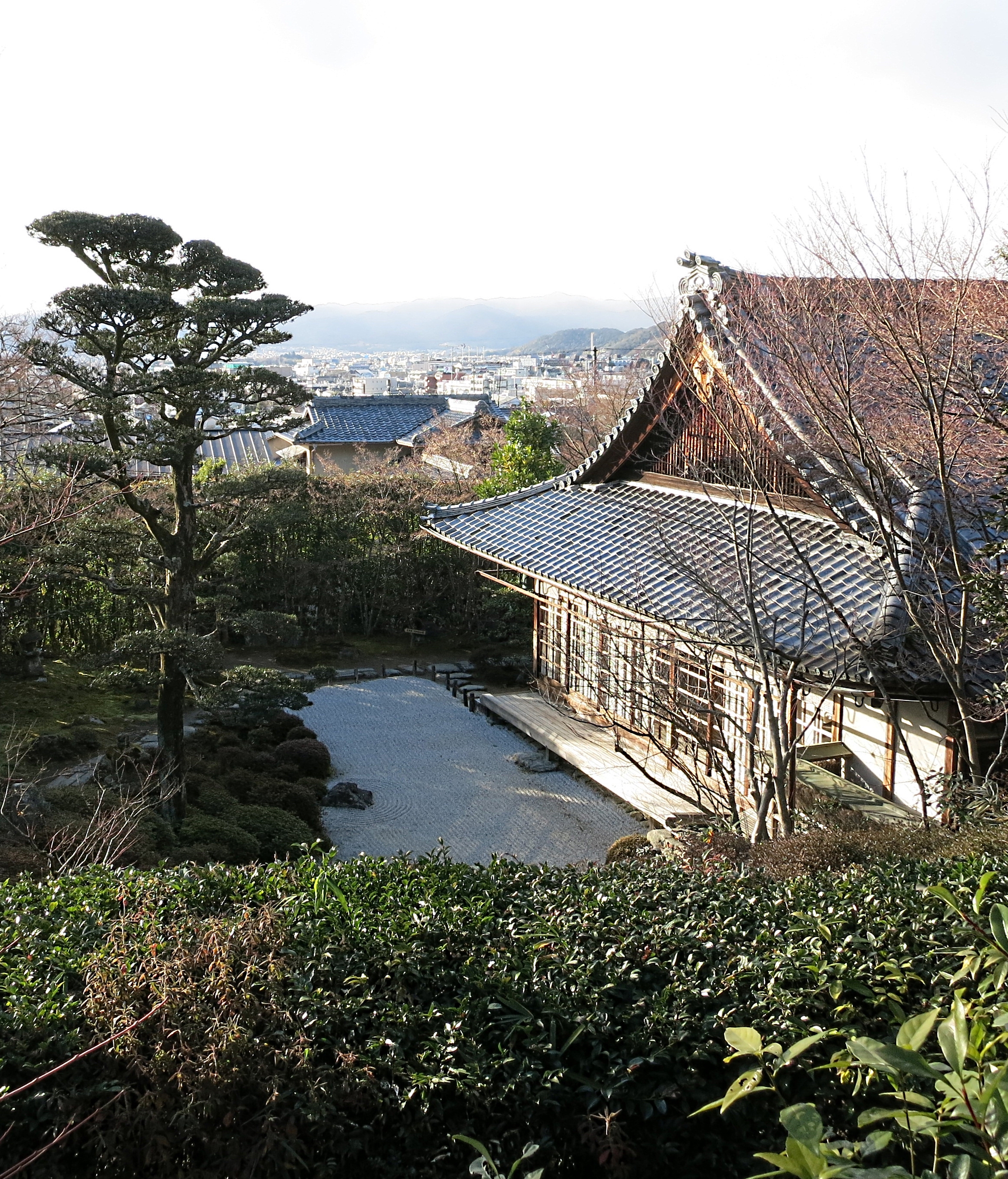
KYOTO WITHOUT CROWDS: Kompuku-ji
For reasons of its own KWC's link to the location of Kompuku-ji has branched off to a different temple. Apologies for this; it will be corrected for future users. It's a delightful place that amply repays the effort of getting there. Here's the entry you'll find for it in KWC.
Founded in the 9th century as a Tendai sect temple, Kompuku-ji later fell into ruin. In the 17th century it was rebuilt as a Rinzai Zen temple by Tesshu, the head priest of Enko-ji. Entrance fee: 400 yen.
Somehow Kompuku-ji seems to have slipped through the tourist net. In so far as it's known to westerners at all, it is because the poet Basho, who was a friend of Tesshu, stayed here for a while in 1670. A century later, when the painter and poet Buson (1716-84) made a pilgrimage here to see the hut where Basho had stayed, he found it falling to pieces and set about restoring it.
Just inside the entrance to the garden, on the right, there’s a stone lantern and a round water basin inscribed with the same characters as the famous one at Ryoan-ji. When each of these kanji is read in combination with the square opening in the middle of the basin, which forms the character kuchi, they have the meaning ‘I know only what suffices’, commonly taken to suggest that the end of knowledge is to learn contentment.
Further on, the pathway of cemented stones gives way to less formal stepping stones, and from there steps lead up the hill to a simple cottage resting on bamboo poles over a stone base. Its thatch roof is covered with moss on to which the fiery autumn leaves fall in bright clusters. A plaque in Japanese notes that Buson held haiku parties here in April and September.
Close to the hut there's a rustic-looking stone well encircled by tree roots. It was supposedly used by Basho, and a stone memorial to the poet stands in front of it. A few yards to the left of this another Japanese-language plaque draws attention to a 300-year-old mountain peach tree that flowers in June, during the rainy season. As you follow the path uphill towards the graves of Buson and his disciples there's a view across Kyoto to Arashiyama and the western mountains.
Down at the temple again you can sit on the veranda of the Main Hall and look out at the raked patterns of the simple karesansui garden – in the company, quite often, of the temple's sociable cat. Unusually for a dry garden, it conveys an impression of warmth and softness, the line of the gravel following the irregular curves of moss and shrub, while the rounded forms of the azaleas bank up behind them, enclosing the south and east to create a more intimate space. The occasional wild flowers that spring up from time to time undisturbed at the edge of the gravel add to the sense of it as a place whose priorities leave room for tolerance.
The doors that open from the veranda into the temple reveal an exhibition room that is not easy for a non-Japanese speaker to make sense of. The hanging in the tokonoma on the right is of Basho, done by Buson. A taped commentary in Japanese, which you can operate yourself, explains the numbered items on display. These are some of the more interesting ones: item 2) carved wood statues of a beetle-browed Buson, seated, and a cheerful-looking Basho in pilgrim gear; item 3) Buson's writing equipment, including table and inkstone box; item 5) a river and mountain scene copied by Buson from a well-known Chinese painting.
The exhibits in the glass case on the left are connected to the story of Murayama Takajo (1809-76). A highly cultivated woman, she was a former lover of Ii Naosuke, lord of Hikone and in the late 1850s de facto ruler of Japan. (Item 10 is not, as one might assume, a portrait of him but of the man who served as his poetry teacher and later counsellor.) Takajo had been trained as a geisha and used this role to act as a spy for the shogunate, reporting to Naosuke on the anti-Tokugawa elements who opposed his policy of opening Japan to the west.
Following Naosuke's assassination in 1860, she went into hiding for two years before being captured and exposed near Sanjo bridge. The picture displayed here (item 7) shows her bound to the stake beneath a sign that details her crimes. After three days she was rescued by sympathisers from this slow death and took refuge in Kompuku-ji, where she spent her remaining years as a nun. Outside the temple, just beside the entrance gate, there's a small shrine that she built in gratitude for her rescue.
